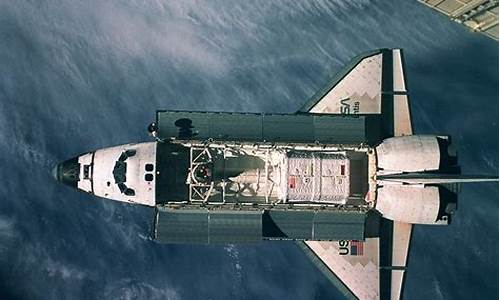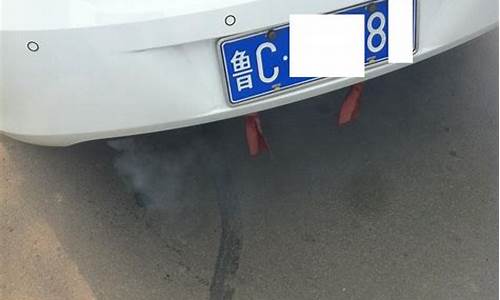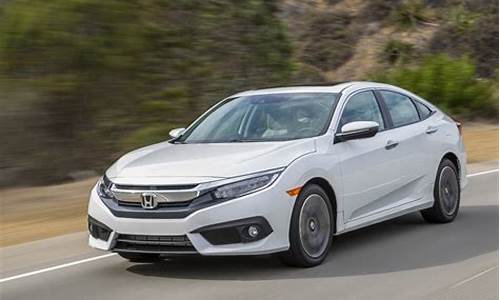shuttle worth_shuttleworth mark姓
对于shuttle worth的问题,我有一些经验和见解,同时也了解到一些专业知识。希望我的回答对您有所帮助。
1.Thawte这个牌子的多域名ssl证书有什么特别的?
2.请人帮我翻译一下这些关于"最贵的东西"的话,有很多专有名词
3.什么是乌班图,乌班图与linux有什么不一样的么,是很不一样么
4.额,突然想问像ubuntu这些系统的公司如何赚
5.Ubuntu 与 Debian 之间有哪些不同之处

Thawte这个牌子的多域名ssl证书有什么特别的?
多域名(SAN)是SSL证书内置的一个自带功能,它允许用户用单个证书保护多个域名。域名数量取决于证书颁发机构(CA),但多域名名SSL证书最多可以保护250个域名。通过多域名名SSL证书保护多个域名,用户可以节省资金成本和SSL证书的管理时间。采用多域名SSL证书,第一个域名被视为主域名,其他域名被视为SAN(主题备用名称)域名。如采用一张证书保护五个不同的域名,则SSL证书注册的过程中添加的第一个域将默认为基本域名,其他4个域名将被视为SAN域名。多域名SSL也可用作域名验证,组织验证和扩展验证。
在域名验证过程中,将通过检查域名注册商的信息或通过电子邮件的来完成验证。但在组织和扩展验证的验证过程,将通过检查申请人和企业相关文件来完成验证。
证书颁发机构(CA)需向颁发的每一张SSL证书提供多个服务器许可证,允许用户在多个服务器上保护不同的域名。但若颁发机构只提供一个服务器许可证,申请人需额外购买其他服务器的许可证。
解决方法:ssldun可以找到证书特点
请人帮我翻译一下这些关于"最贵的东西"的话,有很多专有名词
Abstract1: Domesticating translation and foreignizing translation are two
different translation strategies. The former refers to the translation
strategy in which a transparent, fluent style is adopted in order to minimize
the strangeness of the foreign text for target language readers, while
the latter designates the type of translation in which a target text deliberately
breaks target conventions by retaining something of the foreigness of the
original. But what is the translation practice like in China? Do translators
tend to use foreignizing methods or domesticating ones? What are the factors
that affect their decision making? This paper tries to find answers to
the questions by looking into the translation of English metaphors into
Chinese.
Key words: domesticating translation; foreignizing translation; metaphor;
target
language reader
1. Introduction
"Domesticating translation" and "foreignizing translation" are the terms
coined by L. Venuti (1995) to describe the two different translation strategies.
The former refers to the translation strategy in which a transparent, fluent
style is adopted in order to minimize the strangeness of the foreign text
for target language readers, while the latter designates the type of translation
in which a target text "deliberately breaks target conventions by retaining
something of the foreigness of the original" (Shuttleworth &Cowie, 1997:59).
The roots of the terms can be traced back to the German philosopher Schleiermacher’s
argument that there are only two different methods of translation, " either
the translator leaves the author in peace, as much as possible, and moves
the reader towards him; or he leaves the reader in peace, as much as possible,
and moves the author towards him" (Venuti, 1995: 19-20).
The terms "foreignization" and "domestication" may be new to the Chinese,
but the concepts they carry have been at least for a century at the heart
of most translation controversies. Lu Xun (鲁迅) once said that "before
translating, the translator has to make a decision : either to adapt the
original text or to retain as much as possible the foreign flavour of the
original text" (Xu, in Luo, 1984: 315).
But what is the translation practice like in China? Recently I have read
two articles which show completely conflicting views on this question.
In his article entitled "Chinese and Western Thinking On Translation",
A. Lefevere makes a generalization based on his comparison of Chinese and
Western thinking on translation,
When Chinese translates texts produced by Others outside its boundaries,
it translates these texts in order to replace them, pure and simple. The
translations
take the place of the original. They function as the original in the culture
to the extent
that the original disappear behind the translations. (Bassnett & Lefevere,
1998:14)
However, Fung and Kiu have drawn quite different conclusions from their
investigation of metaphor translation between English and Chinese,
Our comparison of the two sets of data showed that in the case of the English
metaphor
the image often than not retained, whereas with the Chinese metaphors,
substitution is
frequently used. [...] One reason perhaps is that the Chinese audience
are more familiar with
and receptive to Western culture than the average English readers is to
Chinese culture. (Fung, 1995)
The above conflicting views aroused my interest in finding out whether
the Chinese tend to domesticate or to foreignize when they translate a
foreign text. In what follows I shall not compare translation by Western
and Chinese translators, but rather look into the translation of English
metaphors into Chinese.
2. What is Metaphor?
The Random House Unabridged Dictionary (second addition) defines metaphor
as "a figure of speech in which a term or phrase is applied to something
to which it is not literally applicable in order to suggest a resemblance."
While according to BBC English Dictionary, "metaphor is a way of describing
something by saying that it is something else which has the qualities that
you are trying to describe."
Peter Newmark defines metaphor as "any figurative expression: the transferred
sense of a physical word; the personification of an abstraction; the application
of a word or collocation to what it does not literally denote, i.e., to
describe one thing in terms of another. [...] Metaphors may be ’single’
-- viz. one-word -- or ’extended’ (a collocation, an idiom, a sentence,
a proverb, an allegory, a complete imaginative text" (1988b:104).
Snell-Hornby rejects Newmark’s concept of the "one-word metaphor" in favour
of Weinrich’s definition that "metaphor is text" (1988:56). She believes
that a metaphor is a complex of (at least) three dimensions (object, image
and sense), reflecting the tension between resemblance and
disparity" (1988: 56-57).
This paper will follow the idea that "metaphor is text" which includes
an idiom, a sentence, a proverb and an allegory.
3. What has been said about the translation of metaphor?
"In contrast to the voluminous literature on metaphor in the field of literary
criticism and rhetoric, the translation of metaphor has been largely neglected
by translation theorists" (Fung, 1995). In his article "Can metaphor be
translatable?", which is regarded as an initial discussion of the subject,
Dagut says,
"What determines the translatability of a source language metaphor is not
its ’boldness’ or ’originality’, but rather the extent to which the cultural
experience and semantic
associations on which it draws are shared by speakers of the particular
target language"
(1976).
Snell-Hornby takes metaphor translation in the light of the integrated
approach. She says that
The sense of the metaphor is frequently culture-specific, [...] Whether
a metaphor is
’translatable’ (i.e. whether a literal translation could recreate identical
dimensions), how
difficult it is to translate, how it can be translated and whether it should
be translated at all
cannot be decided by a set of abstract rules, but must depend on the structure
and function of
the particular metaphor within the text concerned ". (1988: 56-9)
van den Broeck conceives the treatment of metaphors as a functional relevancy
to the communicative situation (1981). Mary Fung also considers translating
metaphor as a communicative event which is both interlingual and intercultural
(1995).
Different from the semantic, cultural and functional perspectives mentioned
above, Newmark holds a more pragmatic approach. Drawing on his practical
experience, he proposes several procedures for translating metaphor: (1)
Reproducing the same image in the target language; (2)
Replacing the SL image with another established TL image; (3) Replacing
the metaphor by simile; (4) Retaining the metaphor and adding the sense;
(5) Converting the metaphor to sense; (6) Omitting the metaphor if it is
redundant.
Discussions of the subject, especially those written in Chinese, are also
pragmatic rather than theoretical. In E-C Translation Coursebook (1980
) which is the most widely used translation textbook in China, Zhang Peiji
) and his co-compilers summarized three popular methods for translating
metaphors: (1) Literal translation (similar to Newmark’s first procedure);
(2) Replacing the SL image with a standard TL image (similar to Newmark’s
second procedure); (3) Converting the metaphor to sense (Same as Newmark’s
fifth procedure).
Based on the methods suggested by Zhang and his colleagues, Guo Zhuzhang
) proposes five in A Practical Coursebook in Translation Between
English and Chinese (1996, revised edition): (1) Literal translation plus
explanation; (2) Literal translation plus meaning; (3) Adapting the metaphor;
(4) Using Chinese couplets to render the English metaphor; (5) Replacing
the SL image with a TL image. 更多论文,请访问.net.ru
4. How Are Metaphors Translated?
The above methods, envisaged as guidelines for the translation students
as well as the practical translators, are quite exhaustive of rendering
the metaphor. Which of the methods of translation are actually domesticating
and which ones foreignizing? In the following section I will cite some
examples of metaphor translation from two translation textbooks, two dictionaries
and two articles as the source for the analysis.
什么是乌班图,乌班图与linux有什么不一样的么,是很不一样么
1.World most expensive woman. Zhan Nifu Luo river Pais. She takes outinsurance 1 billion euros in a New York insurance company for theoneself perfect sex appeal luster of the skin.
2.World most expensive movie. Still was "泰坦尼克 the Number". Itsconstruction cost has surpassed 200 million US dollars
3.World most expensive advertisement. The 20m year hundred matterscompanies invite the singing star cloth 兰尼, Speers for its productphotography advertisement. The short 90 second advertisements, thefriendship famous cool drink company competes pays her 7.53 million USdollars.
4.The world most expensive travel, the American merchant Dennis peduncleholds with South African IT industry 100.01 million wealthy men Mark沙特尔 沃特, respectively pays 20 million US dollars as soon asto swim to the international space station
5.World most expensive city. Any place life could not be a worthyopponent with Tokyo.
来不起了
回答者:第6570天的早晨 - 见习魔法师 二级 5-12 22:15
1. worlds most expensive women. Jennifer Lopez. She takes outinsurance 1 billion euros in a New York insurance company for theoneself perfect sex appeal luster of the skin. 2. worlds most expensive movies. Still was "Titanic". Its constructioncost has surpassed 200 million US dollars. 3. worlds most expensive advertisements. The 20m year hundred matterscompanies invite singing star Britney Spears are its productphotography advertisement. The short 90 second advertisements, thefriendship famous cool drink company competes pays her 7.53 million USdollars. 4. worlds most expensive travel, American merchant Dennis Tito andSouth African IT industry 100.01 million rich Mark Shuttleworth,respectively pays 20 million US dollars as soon as to swim to theinternational space station. 5. worlds most expensive cities. Any place life could not be a worthyopponent with Tokyo. 6. worlds most expensive volume production passenger vehicle. The seatback cushion inclination angle may the mode chair, the DVD player,surround stereo sound sound system - this all luxurious facilities allto need some people to buy the list. A wilhelmmaybach62 automobile you"only need" spend 360,000 euros. 7. worlds most expensive shoes. Famous jewelry business Si Toete theWaRuiz manufacture inlays has 642 rubies the high-heeled shoes, theselling price is 1.6 million euros, is price soaring shoe which isworthy of the name. 8. worlds are most expensive one meal. David Einhorn (bossGreedightCapital Corporation) for wins fertile arranges in order theopportunity with the idol - 100.01 million rich and powerful peoplewhich Warren Buffett dines together, unexpectedly spend 250,000 USdollars high prices to buy a cake. 9. worlds most expensive pictures. Reubens's oil painting "BeatsBaby". In 2002 exchanges ownerships by 73.5 million euros. 10. worlds most responsibilities cigarette. Treasurer sign cigarette.Each box approximately is equal to 24 euros, only sells in theexclusive agency. 11. worlds most expensive potatoes. French LaBonnette variety potato.Each kilogram selling price approximately 500 euros. 12. worlds most expensive coffee. The Sumatran island producesKopiLwah variety coffee. 0.25 pounds approximately 75 US dollars. 13. worlds most expensive clothings. American astronaut's astronaut'sspace suit. Each set of values 9 million US dollars. 14. worlds most expensive guesthouses, Saudi Arabian Dubai's BudAIArabguesthouse. The cheapest room also takes 770 euros as soon as tosleep, but king the anteroom is 7,700 euros as soon as sleeps. 15. worlds most expensive stadiums. Paris suburb SIededePIailicestadium. In 1998 the French national sports team has won the worldseries champion in here. Its construction cost is 460 million euros. 16. worlds most expensive stocks. American Berkshire Hathewayinvestment company's stock in exchange selling price each exceed64,000 euros. 17. worlds most expensive soccers athlete. Qi Danei. 2 prints for 1year, this French players break the record 68.7 million US dollarsextensions membership dues team to change to the imperial Madrid teamfrom You Wentu the Si, 18. worlds most expensive bras. Its value 12.5 million USdollars. German nationality shade model Heidi Klum has demonstrated itat a New York fashionable clothing demonstration. 19. worlds most expensive picture-and-story books. "Boy Jim And HisPuppy Strubi" the picture-and-story book, a collector pays 100,000euros to buy its title page first picture "the black island". 20. worlds most expensive commercial brand. "Coca-Cola". Its valueestimate amounts to 68.9 billion US dollars, shames not is equal tothe entire company value 60%. 21. worlds most expensive banana plants compare the baby. Value -100,000 euros. The baby wears inlays has the real diamond theone-piece dress. 22. worlds most expensive books. "Leicester statute book: By water,Earth and heavenly body system ". It by special type India on one kindof precious decoration paper. Bill Gates spend 24OO ten thousand USdollars to buy this book.
额,突然想问像ubuntu这些系统的公司如何赚
Ubuntu是一个以桌面应用为主的Linux操作系统,跟Linux区别不大,主要区别如下:一、指代不同
1、乌班图:是由南非人Mark Shuttleworth创办的基于Debian Linux的操作系统,开于2004年10月公布Ubuntu的第一个版本。
2、linux:是一套免费使用和自由传播的类Unix操作系统,是一个基于POSIX和Unix的多用户、多任务、支持多线程和多CPU的操作系统。
二、特点不同
1、乌班图:桌面系统使用最新的Gnome、KDE、Xfce等桌面环境组件。抛弃繁琐的X桌面配置流程,可以轻松使用图形化界面完成复杂的配置。集成搜索工具Tracker,为用户提供方便、智能的桌面资源搜索。
2、linux:能运行主要的Unix工具软件、应用程序和网络协议。它支持32位和64位硬件。Linux继承了Unix以网络为核心的设计思想,是一个性能稳定的多用户网络操作系统。
三、优势不同
1、乌班图:与著名的开源软件项目LTSP合作,内置了Linux终端服务器功能,提供对以瘦客户机作为图形终端的支持,大大提高老式PC机的利用率。
2、linux:不仅系统性能稳定,而且是开源软件。其核心防火墙组件性能高效、配置简单,保证了系统的安全。在很多企业网络中,为了追求速度和安全,Linux操作系统不仅仅是被网络运维人员当作服务器使用,Linux既可以当作服务器。
百度百科-linux
百度百科-乌班图
Ubuntu 与 Debian 之间有哪些不同之处
在 Linux 业界经常会提到“谁能通过 Linux 桌面盈利”的这个话题,Canonical 公司的 CEO 兼 Ubuntu Linux 的创始人回答了这一个问题。Mark Shuttleworth 的回答是:”I don’t think anyone can make money from the Linux desktop.”
的确是这样,Mark Shuttleworth 作为目前流行的 Linux 发行版 Ubuntu 身后支持者,他认为他或其他任何人都不可能靠 Linux 桌面赚钱,进一步说,他从未通过 Ubuntu Linux 桌面赚到过钱。
当谈到即将在10月30日发布的 Ubuntu 下一个发行版 Ubuntu 8.10 的时候,Mark Shuttleworth 表示 Canonical 公司一直把 Ubuntu 桌面看成是一个零收入的产品。
Mark Shuttleworth 谈到他不看好将自由软件打包封装后再出售是一个可行的盈利方法,他们认为唯一能建立的商业模式的方案是为这些软件提供附加服务。Mark Shuttleworth 还谈到他认为微软的盈利模式也将向提供服务进行转变,并且他还语出惊人地说,”I’ve heard creditable reports of Microsoft offering XP at no cost to OEMs.
如果要求你解释一下Ubuntu和Debian之间的区别,可能会得到这样回答:Ubuntu是面向新手的发行版,而Debian是面向专家的发行版。这样的描述部分正确,但同时夸大其辞。
Debian的声誉建立在10多年前的状态;如今,允许每个用户可以选择众多的实际控制特性。
同样,从设计概念来看,Ubuntu非常易于使用。如果你的工作习惯与这些概念不一致,可能会强烈反对Ubuntu易于使用这一观点。
然而,虽然Ubuntu源自Debian,但两者的区别还是很明显。从安装和桌面,到程序包管理及社区,大家认为自己对于Ubuntu和Debian了解的情况可能是错误的,或者至少需要作一些严格限制――这一切使选择哪个发行版适合贵公司的业务战略显得非常困难。
安装方面的区别
眼下,你可以使用哪个发行版取决于拥有的硬件。Debian目前面向大约13种硬件架构:从标准的32位和64位英特尔架构到ARM和PowerPC架构,还支持另外两种正在开发的架构。相比之下,Ubuntu支持32位和64位版本这两大不同的计算机桌面环境,现正在为移动设备开发Ubuntu ARM版本。
要考虑的另一个方面是面向每个发行版的安装程序。Ubuntu的标准安装程序被设计成主要为了要求尽量少的用户输入,以便确保安装简单、速度尽可能快。要是你遇到任何问题,可以试试专家模式安装程序,这是Debian安装程序稍稍改头换面的版本。
Debian安装程序显然有其他优先事项。比如说,其图形化版本是GUI,这有别于主要在工具包中的基于文本的安装程序:除了让害怕使用命令行的那些用户感到安心外,没有任何优势可言。
相比之下,Debian之前的声誉是,只要按照在线操作说明,此外每个阶段接受默认设置,通常就可以安装Debian。然而,如果你决定亲自选择,可以在安装过程的每一步选择每个设置,这大大增加了安装所需的时间。Debian安装程序并不是迎合没有经验的用户,而是兼顾所有不同水平的用户。它不是很漂亮,但是不用编译自己的程序包,所以你不可能找到更灵活的安装程序。
管理和程序包管理方面的区别
Debian和Ubuntu都鼓励使用根帐户用于管理,使用受限制帐户用于日常计算,这一点不足为奇。然而,选择的安全模式不一样。
在Debian中,用户通常通过直接登录进入到根帐户来执行管理任务,然后尽快再次注销,以便缩短安全隐患期。不过,Ubuntu隐藏了根密码;不是使用sudo,而是允许至少1个用户输入自己的密码,以便下达管理命令。
Debian的程序包主要分为三大类:测试版、稳定版和不稳定版。新的程序包进入稳定版,然后在经过调试后转变成测试版。官方版本准备好后,处于测试版的现有程序包接受进一步的检查,最后成为新的稳定版。
近些年来,官方、甚至非官方增添了另外一些程序包,比如Backports、Experimental、Security、Old Stable和Update。然而,用户需要把注意力主要放在三大类软件库上。
Debian系统具有的优点之一是,你可以在下面这两个极端之间作一选择:极其稳定,但缺点是版本较老;或者非常先进,但缺点是软件不大稳定,技术出现的重大变化可能让不知情用户的系统崩溃。这里的选择取决于你是升级核心组件(比如Linux内核),还是升级灾难发生时不影响其他东西的自带代码库的独立式实用工具。
恰恰相反,Ubuntu的程序包来自Debian测试版或不稳定版。Ubuntu的软件库按照其他标准来加以组织,而不是由测试状态来加以组织。Main含有Canonical支持的软件,以及Ubuntu社区支持的Universe软件。Restricted含有专有驱动程序,其中Multiverse存放有版权或其他法律限制的软件。
另一个主要的区别在于,Debian更致力于提倡软件自由。它在默认情况下只安装免费软件,安装程序甚至提供没有专有固件的内核。如果你需要非免费软件,就需要为每个软件库添加Nonfree和Contrib这两个部分。
正好相反,免费与专有之间的区别在Ubuntu当中不是那么清楚。这边厢,Debian不鼓励使用专有软件,不过允许用户做出自己的选择;那边厢,Ubuntu鼓励用户安装专有软件,获得与其他商业操作系统上的计算体验相媲美的计算体验。万一你愿意试一下,可以在Debian上获得同样的体验,但是Debian更清楚地表明:你这么做的同时牺牲了软件自由。
桌面方面的区别
Ubuntu和Debian默认情况下使用不同的桌面环境。Ubuntu默认情况下使用Unit;近几年来,背后大力支持Ubuntu的企业Canonical一直在开发这个桌面。如果Canonical在营销移动设备方面取得成功,那么在未来你就能够在所有硬件上使用同一个桌面了。
然而,那些默认桌面意味着除了方便外没多大意义。Debian和Ubuntu都支持多个桌面。在Ubuntu中,桌面是半独立的发行版,包括Xubuntu for Xfce和Kubuntu for KDE。那些变种与标准的Ubuntu采用了同样的底层GNOME技术,能不能与官方版本同步不好说,时间相差不到几周。
在Debian中,桌面方面的选择大致一样,不过开发桌面的团队与开发标准Debian的团队关系比较紧密。那些版本的时间表有变化,所以总是预计要花点时间在网上搜索,查一查开发结果可能让你有兴趣的团队的近况。
除了Unity外,为Ubuntu编写的大多数软件也有面向Debian的版本。为Debian编写的软件几乎总是有面向Ubuntu的版本,因为Ubuntu的程序包来自Debian的软件库。由于Debian的发布周期慢得要命,Ubuntu的软件还通常比Debian的软件来得更新颖。不过其优点是,Debian往往更稳定,经过更全面的测试。
提醒一句:别想当然地以为共同的起源让两者程序包可以相互兼容;因为虽然许多程序包可以同时安装到Ubuntu和Debian上,但大约20%的Ubuntu程序包与Debian不兼容的可能性相当大,那是由于名称和文件位置不一样。
社区方面的区别
对于从事开发工作的用户来说,Ubuntu社区和Debian社区也是他在选择时需要考虑的一个因素。众所周知,Debian常常事无巨细地讨论一切,尤其是有争议的话题,甚至会进入集体表决的地步。
近些年来,Debian似乎很成熟老练,但是讨论仍有时变成一场混战。过去,Debian被被描述成是一种对女性不友好的环境;而近来,将init换成systemd方面的争论变得非常激烈,结果好几个资深开发人员选择走人,而不是忍受虐待。
与此同时,Debian奉行精英民主,所有官方维护人员投票表决Debian领导者及其他所有议题。虽然被任命的岗位有时是权力来源,但是Debian工作人员普遍推行的领导方式还是提建议和实行民主,而不是直接发号施令。
Ubuntu有别于Debian的地方在于,Ubuntu为社区活动制定了行为规范。时至今日,Ubuntu的社区管理员是Jono Bacon,他写过一本书,介绍《社区之道》,还投入了大量的精力来消除冲突。此外,每年都会选择技术委员会(Technical Board)和社区理事会(Community Council)的部分成员。
然而,这种表面上的民主与实际的民主不太一样。Ubuntu的创始人Mark Shuttleworth在管理委员会中占有永久性席位,还拥有决定权。Mark及其Canonical代表对于社区通常拥有否决权,这在过去好几次引起了用户反抗。
为贵公司的业务战略做出最佳选择
是专家还是新手?要免费还是专有?要易用性还是控制性?需要平台支持吗?要先进性还是要稳定性?要Unity还是要GNOME?要有节制、有礼貌,还是畅所欲言但民主作风?
你也注意到了,选择Ubuntu还是选择Debian常常归结为哪个方面对你及贵公司来说更为重要。
在你选择其中一个发行版之前,我强烈建议弄清楚你在所有这些两选一方面处于什么样的情况。你可能更看重某个方面。
然而,不管你做出怎样的决定,几乎不会选错。尽管我们上面提到了种种区别,但是Ubuntu和Debian并不是偶然成为免费软件领域的两大领先发行版。Ubuntu和Debian的共同霸主地位表明,任何一个都是合理的选择,只要你明白自己的优先事项就行。
好了,今天关于“shuttle worth”的话题就到这里了。希望大家通过我的介绍对“shuttle worth”有更全面、深入的认识,并且能够在今后的学习中更好地运用所学知识。
声明:本站所有文章资源内容,如无特殊说明或标注,均为采集网络资源。如若本站内容侵犯了原著者的合法权益,可联系本站删除。












